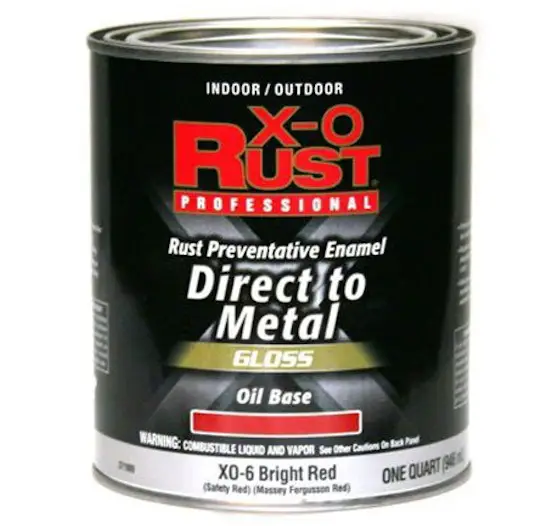Rust Prevention with Paint

Here's a great newer paint that's got the primer built in. This saves you TIME AND MONEY. It comes in many colors. While you're buying this paint at Amazon, be SURE TO GET all the other tools you need in the following list.
DEAR TIM: My painted steel patio furniture is beginning to rust. The rust that is beginning to form is light in some areas. However there are some places, near welds, that are heavily corroded. What is the best way to paint this? Can I use any high quality exterior paint to protect the steel? What about primers? B. E.
DEAR B. E.: Guess what? You are about to fork over part of the 2 billion dollars that is spent each year in the USA on protective coatings that inhibit corrosion. Don't worry, you will probably spend less than $25 to give that patio furniture a strong defense against air and water that are causing your rust problems.
Many people don't realize that the steel used in car parts, porch railings, patio furniture, etc. is very unstable. Processed iron or steel is constantly trying to change back to its original state, that of iron ore. You see, iron ore is simply wet, oxidized (rusty) iron. If you were to pick up a piece of iron ore at a mining site, you would have a clump of rust in your hands.
For you to slow this natural rusting process, you need to coat the processed steel with special paints that contain rust inhibitive pigments. These ingredients chemically alter the conditions at the surface of the metal. They make it very hard for the steel to rust. Paints that contain zinc or zinc chromate do a fantastic job of protecting steel from the corrosive effects of air and water.
Red lead also is a super rust inhibiting ingredient. However, lead poses a significant health risk. It is tough to find paints that contain lead. You may be able to find a commercial or industrial paint store that still carries a paint with lead, but be careful where and how you use it. It can poison you and/or your children.
The key to successfully repainting your patio furniture lies in surface preparation, the correct primer, and a high quality top coat. Inadequate surface preparation (cleaning, sanding, etc.) Is responsible for nearly 80 percent of all premature paint coating failures. If you spend several more hours preparing your furniture before painting, you may get several more years of protection. Sounds like a bargain to me.
Believe it or not, you do not have to remove every speck of rust to obtain superior results. Paints are simply complex colored glues. You need to remove any loose rust, oils, dirt, grease, dust, etc. that would normally come off with a thorough washing, scraping, or wire brushing. If the paint can stick well to the substrate, even slightly rusty steel, you will be OK.
Oil based or alkyd primers that contain high quantities of rust inhibitive pigments tend to work the best when priming rusty steel. They have a much better tendency to wet the surface and flow into microscopic cavities in the steel. This is how the paint sticks to the metal. In addition, these special primers are formulated not to breathe. Water vapor can't pass through to get to the steel.
As soon as the primer is dry, you need to paint the furniture with your finish coat of paint. There are both water based and oil based paints that will work well for this purpose. Be sure to use paints that are compatible. Most manufacturers will tell you which primer to use for a particular finish coat or vice versa. Don't try to do amateur chemistry and mix and match for yourself!